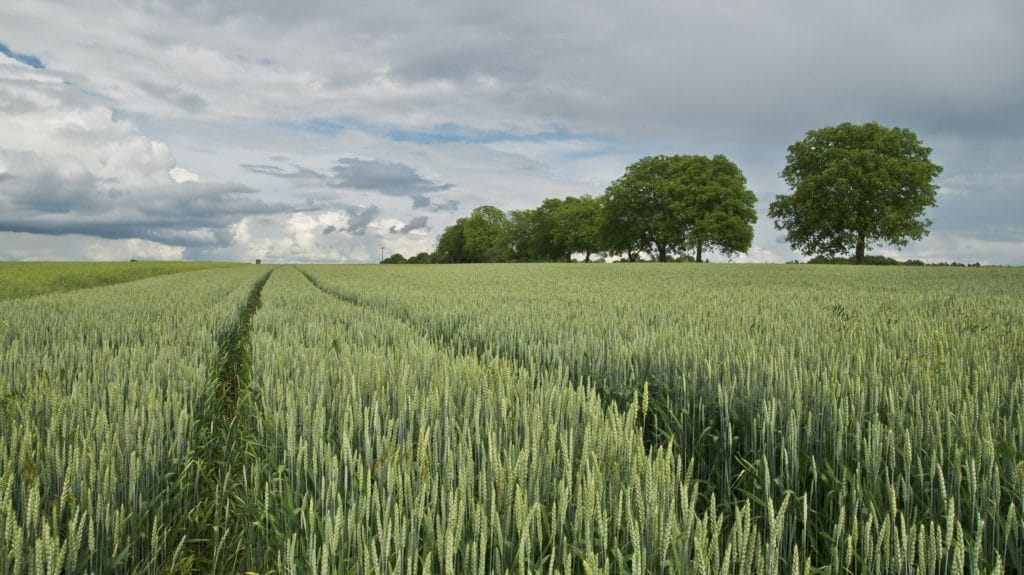There has been much talk lately in the agricultural press and on social media about whether breeding contributes to the sustainability goals of our industry and our nation. For those involved in the seed sector, this seems absurd. The contribution of genetic and varietal development to sustainable crop production is well documented.

The goal of breeding is to confer incremental improvements to varieties: higher yields to produce more crops on less land, better nutrient use-efficiency to reduce the amount of input needed per unit of yield, and greater resistance to biotic and abiotic stress to better adapt to changing production conditions with less intervention. In addition, crops can now be tailored for environments or production areas, even within one operation, to ensure the optimum use of resources and benefits. Is this not what sustainability is all about? Doing more with less?
There are researchers working to confer nitrogen fixation capabilities to non-legume crops, a trait that, if successful, will one day be packaged into a variety and will significantly impact nitrogen emissions. Researchers are working on optimizing root architecture to improve drought tolerance and increase soil organic carbon. With climate change will come new pests that we may not have had to deal with before.
Incorporating resistance traits into our germplasm will be done in a genetic research program. Those traits will not only positively impact yield, but they can also reduce the need for other crop inputs like pesticides and the footprint of their application. Gene editing and other new technologies can increase the rate of improvement. But none of these traits will make it to the field without variety development.
Cover cropping has become common in the sustainability lexicon and optimizing the impact of that practice will also require variety development. It honestly feels a bit foolish that we must have this conversation.
So, the question shouldn’t be what breeding can do for sustainability (because it can obviously do a lot). We should be asking what we can do for the sustainability of breeding and variety development here in Canada.
Traditionally, at least for cereal crops, crop science clusters within the AgriScience program of the federal Agricultural Policy Framework have provided a way for producers and other industry groups to match funding with federal dollars to support public variety development efforts. The current framework, Sustainable Canadian Agricultural Partnership (SCAP), started on April 1, 2023, and will end after its five-year term in 2028. However, the intent of the cluster as a means to support public breeding activities, especially those of Agriculture and Agri-Food Canada (AAFC), has changed with each new framework. Clusters have moved from being industry driven to federal policy driven.
Leading up to the submission of the SCAP clusters, applicants were told that this round would be different. Projects were expected to address federal policy priorities such as reducing greenhouse gas emissions, carbon sequestration and other means of mitigating climate change, with higher federal cost shares in these areas than others such as economic growth and development and sector resilience.
Activities were expected to have well-developed measurement components so that their impact on climate change goals could be clearly demonstrated. But problematic for applicants to swallow was the suggestion that variety development, especially near commercialization activities that have traditionally made up the bulk of the cluster, were not considered by policymakers as having an impact on SCAP objectives.
On one hand, of course government will use funds to advance its own policy objectives and research priorities. However, an environment has been created, with help from the federal government, where producers rely heavily on public variety development, and they know no other basket in which to put their eggs.
AAFC has a history of unpopular takes on its role in near-commercialization variety development. I entered the industry shortly after a 2012 statement by then Ag Minister Gerry Ritz that AAFC would exit at the “F6” stage and hand commercialization off to another, likely private, entity. Because of an already well-established history of producer investments, including through the Western Grains Research Foundation in Western Canada, there was huge pushback. This message was walked back.
Then came the value creation discussions, which would continue for nearly a decade after the 2012 announcement, with the intention of establishing a nationwide royalty scheme for farm-saved seed use. Such a scheme would not only provide additional funding for AAFC programs and their ever-shrinking budgets, but it would also provide an incentive for private entities to set up shop and develop appropriate capacity, allowing AAFC to transition to more up-stream, public good genetic research pursuits. Government, AAFC and the Canadian Food Inspection Agency led consultations in 2019, which can inarguably be described as unsuccessful.
Industry, through the Canadian Seed Trade Association and the Canadian Plant Technology Agency (now Seeds Canada) established a royalty mechanism: the Variety Use Agreement, or VUA. The VUA was in place beginning in 2020 and now has 17 varieties under it — none of them from AAFC in Western Canada. AAFC and some of their producer investors have successfully restricted Canada’s ability to have a universal royalty scheme for farm-saved seed, disrupting competition and limiting the success of private industry investors.
So, a bit of a mess has been created over the past decade. If government doesn’t develop alternative funding programs to replace variety development investment through clusters, and the market signals to attract private investment and capacity building have been jammed, we need to agree on a path forward.
The proportion of producer levies that are directed towards public variety development can be increased, but there are limits here too. Commission pockets are not bottomless, especially those with smaller production shares, and there are countless other priorities begging for their attention. There is, after all, a tremendous amount to be done on the agronomic management side of the equation, work that is better served by funding envelopes longer than five years. There is more need for research than there are dollars to go around.
For our agriculture industry and producers to achieve sustainability goals while producing enough food to meet growing demands and at the same time continuing to make a profit, we need all hands on deck. Our federal government needs to promote a culture where genetic intellectual property is respected, and investment is encouraged.
We need access to every tool in the toolbox, including innovations from other jurisdictions — but those innovations won’t migrate here if there is no return on investment for their creators. While producers and AAFC may need to consider a change in approach, private industry needs to accept the responsibility of delivering improved varieties, worthy of producer investment.
Variety development and breeding will more than pull their weight in helping Canadian agriculture become more sustainable, but if we want genetic innovation to reach its full potential, we all must commit to creating the right environment for it to happen.













